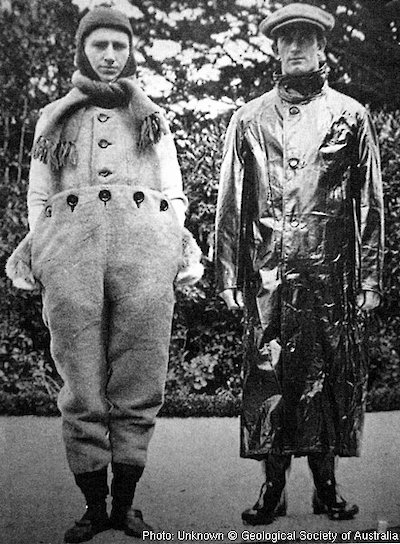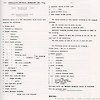Clothing, field equipment and fuel
Alas, the storm is come again. My best way is to creep under his gabardine. There is no other shelter hereabout … I will here shroud till the dregs of the storm be past.
— Trinculo, Act II, Scene II, The Tempest by William Shakespeare
For Antarctic attire, Mawson favoured natural materials such as loose-fitting Burberry windproof gabardine outer garments, woollen underwear, socks and balaclavas, fur mitts; and finnesko (reindeer skin) boots with dried grass for warmth (obtained from Norway).
Other essential items included goggles to protect eyes from glare and freezing wind, skis for moving over snow, crampons for slippery ice conditions, and ‘Bonza’ multipurpose pocket tool sets and ice axes. Sledging parties needed tents and sleeping bags of camel hair or reindeer skin; the latter were also used in the huts.
On sledging trips a Primus stove provided the essential heat to melt snow and ice for water and to cook food. It was used in conjunction with a Nansen cooker, allowing food to be cooked and snow melted simultaneously. ‘By the combination of “Nansen Cooker” and Primus stove one gallon of kerosene oil properly husbanded is made to last for 12 days in the preparation of the ordinary ration for three men,’ Mawson wrote.
Sledges and their harnesses were modeled on the classic designs by the Norwegian arctic explorer Fridtjof Nansen. The sledges, bound together by leather thronging, were built from Australian timber.
Mawson was not entirely comfortable with transporting petroleum fuel, but the use of the ‘air tractor’ (the modified, wingless aircraft), two wireless plants and a motor launch made this a necessity. The ship’s poop deck was taken up with 1000 tins of petrol or gasoline (each containing 18 litres or four gallons) and over 300 tins of kerosene.


